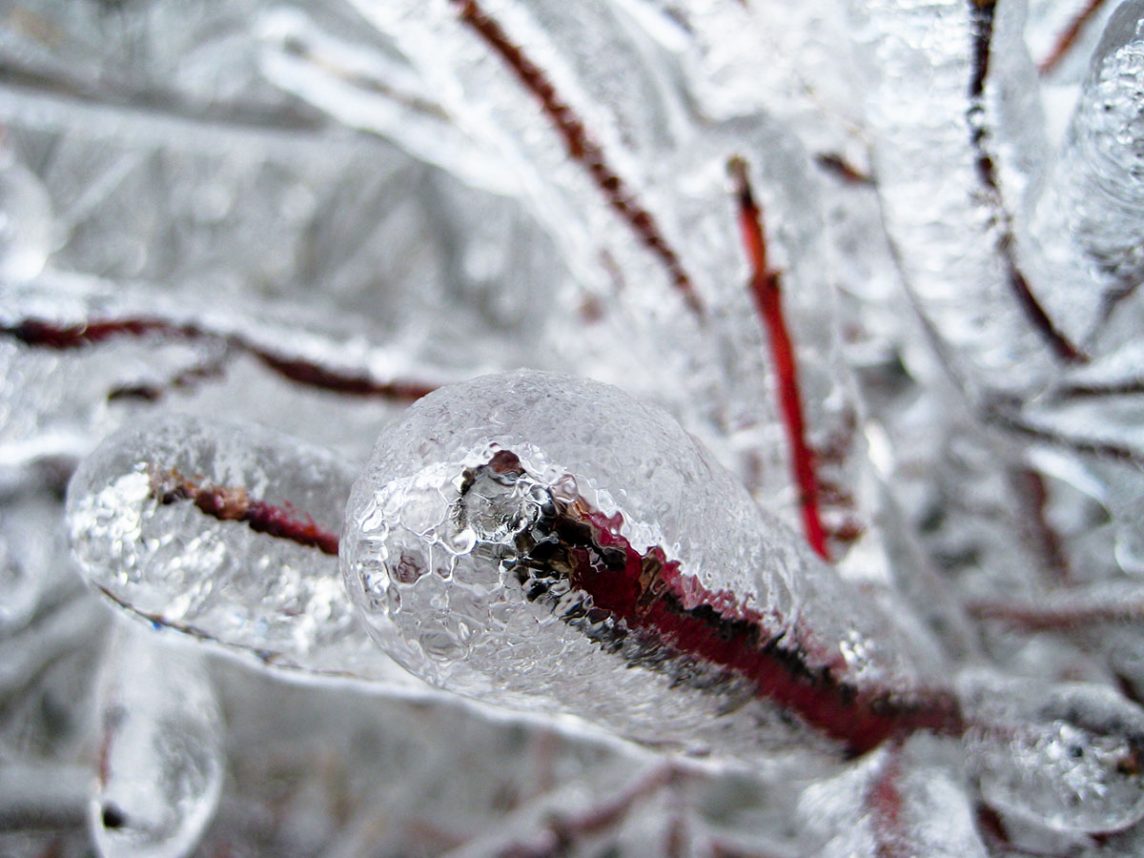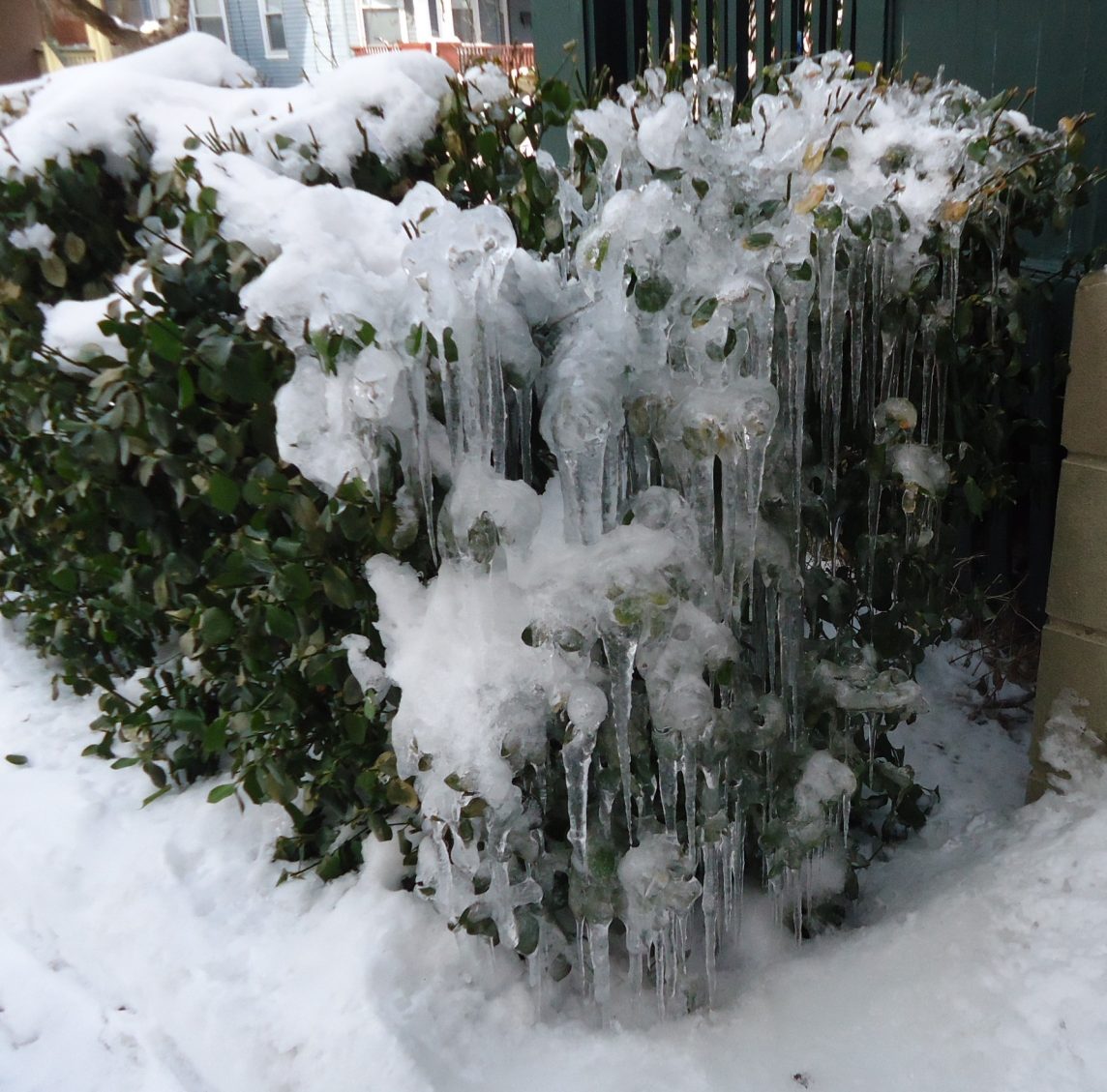
Your trees and shrubs take a nice long rest during the winter, but that doesn’t mean you can ignore them.
New York’s often harsh winters take a toll on landscape plants.
Winter sun, wind, and cold temperatures can bleach and damage evergreen foliage, damage bark, and injure or kill branches and roots.
Snow and ice can break branches.
Rabbits, rodents, and deer see your trees, shrubs, and plants as a free salad bar when food is scarce, munching on bark, twigs and foliage.
The good news? You can protect your trees and shrubs to minimize this kind of damage.
How to protect plants in winter? We have some tips:
Winter Tree And Shrub Protection
Deciduous shrubs and trees — those that lose their leaves in the fall — have adapted to cold winters by going dormant. So mature trees and shrubs that are hardy in our region typically don’t need extra protection. But young and newly planted trees and shrubs need your help to survive the frigid season.
First, Don’t Forget Water
The roots of new plants haven’t had a chance to venture very far into the soil, so it’s especially important to water newly planted trees and shrubs thoroughly into fall, right up until the ground freezes. Don’t assume your plants don’t need water once summer has passed.
Next Up: Mulch
Once the ground is frozen, apply a 3 to 4-inch layer of insulating mulch around the base of your young trees, shrubs, and plants. This helps insulate the soil so it stays frozen and helps prevent heaving. Don’t push the mulch right up next to the trunk — leave a bit of breathing room.
Tree Guards
Gnawing mice and rabbits can ravage tender young bark. Protect the trunks of young trees with tree guards made of plastic or wire.

The bark of young trees is also susceptible to sunscald. Wrap the trunk with paper tree wrap. This also helps prevent frost cracks, which occur when dark-colored bark heats up on a sunny winter day and then rapidly cools at night.
You can find tree wrap and guards at garden centers and hardware stores.
How To Protect Evergreens In The Winter
Winter’s harsh conditions can cause browning of evergreen branches, especially those of yew, arborvitae, and hemlock. New transplants or plants with tender, late season growth are especially vulnerable.
Prop pine boughs or leftover Christmas tree greens over your evergreens to protect them.
Burlap To The Rescue
Burlap is a great material for winter shrub protection.
Surround your young plant with a few wooden stakes, allowing a few inches of space between the stakes and the plant. Lay burlap over the stakes and secure it with staples. Don’t allow the burlap to touch the foliage. If it gets wet and freezes, it can damage the plant.
Remove the burlap as soon as the weather starts to warm up, but leave the stakes in place so you can cover the plant quickly in case another cold snap hits. In New York, you just never know what to expect. Remove the stakes in the spring when it warms up for good.

What Other Plants Need Burlap?
Many perennials are hardy in winter, but even hardy plants can be damaged if they aren’t healthy or if they’re planted in soggy, poorly drained soil.
Often, newly planted shrubs and trees benefit from protection for the first one to three winters but are winter-tolerant once they’re well established.
Broadleaf evergreen shrubs — azaleas, camellias, rhododendrons — often require covering during extreme cold.
Leave Your Winterizing To Neave
If covering all your vulnerable landscape plants seems daunting, give Neave Landscape Management a call.
We’re your one stop for all your property’s winterization needs.
Our landscaping professionals will get your property all tucked in for winter, so you can spend your fall days simmering chili and watching football.
If you’re in the Hudson Valley, call us at (845) 463-0592. If you’re in Westchester County, call (914) 271-7996; from New Jersey, dial (201) 591-4570; from Connecticut, dial (203) 212-4800. Or, fill out our simple web form, and we’ll contact you about setting up your free consultation.